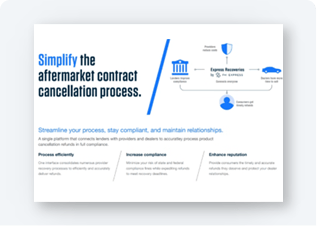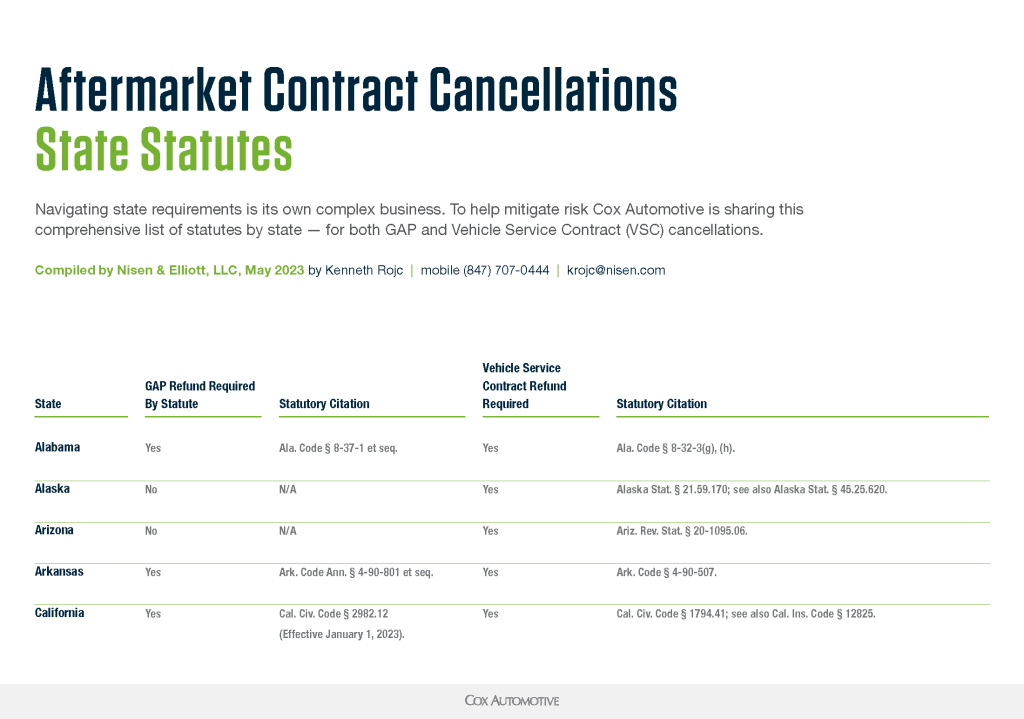Contract Recoveries

Solutions to support your business strategies
Stay compliant with state and federal mandates
Responsibility and timelines for aftermarket cancellations vary by state. Determine accurate refunds and speed your rate of recovery. Learn More
Replace confusion with consistency
Our solution facilitates a streamlined process flow from initiating cancellations to determining accurate refunds to obtaining recoveries on behalf of consumers. Learn More
Give dealers their time back to sell
No longer rely on dealers to initiate cancellations and improve your rate of recovery, creating a win/win for all. Learn More

Solutions to support your business strategies
Select a challenge you face
Mitigate risk
Stay compliant with state and federal mandates
Responsibility and timelines for aftermarket cancellations vary by state. Determine accurate refunds and speed your rate of recovery. Learn More
Streamline the process
Replace confusion with consistency
Our solution facilitates a streamlined process flow from initiating cancellations to determining accurate refunds to obtaining recoveries on behalf of consumers. Learn More
Remove friction and maximize recovery
Give dealers their time back to sell
No longer rely on dealers to initiate cancellations and improve your rate of recovery, creating a win/win for all. Learn More
Put the power of cancellations and compliance in your hands

Exact Quotes
Pull in contract status and exact cancellation refund amounts directly from F&I product companies.
Incremental Cancellation
Automatically schedule and resend notifications when a refund is due, but payment has not been received.
Lookbacks (Review)
Improve recoveries on accounts that were terminated >180 days prior to your original cancellation date.
Why use Contract Recoveries
Aftermarket State Regulations
Discover which states make creditors responsible for refunding customers for GAP, Vehicle Service Contract and Credit Life in the event of cancellations.
Learn more about Contract Recoveries

Powered By Cox Automotive
Streamline operations and deliver high levels of service supported by Cox Automotive's solutions, partnerships and data. Dealertrack solutions help lenders gain efficiencies and compliance throughout the lifecycle of the loan.
Contact Us
Get started with Contract Recoveries
Set a 1:1 strategy discussion about developing an accurate and compliant aftermarket cancellation refund process.
Please note that this form is for lenders only.
Was this page helpful
Yes
No
Thank you for your feedback






